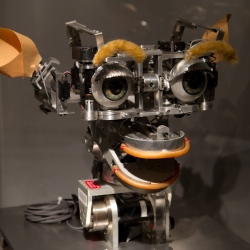
A consortium of European researchers has developed a customizable robot companion for people with memory or mobility problems.
The robot, a mobile wheeled semi-humanoid figure equipped with cameras, sensors, audio and a touch screen interface, can remind users to take their medicine, suggest they have their favorite drink or prompt them to go for a walk or visit friends if they haven’t been out for a while, and alert emergency services if something is amiss.
Developed over 33 months by a consortium of European research institutes, universities and technology companies in seven countries — Finland, France, Greece, Italy, the Netherlands, Switzerland and the United Kingdom — the companion robot is just one of several results of an EU-funded project, An integrated intelligent home environment for the provision of health, nutrition and well-being services to older adults (MOBISERV), which received EUR 2.75 million in research funding from the European Commission.
Part of a smart-home environment
‘This has been a very broad project, we’ve worked not only on the robot but also integrating it with a smart-home system and with smart clothes,” said Herjan van den Heuvel of Smart Homes, the Dutch Expertise Centre on Home Automation and Smart Living, which oversaw the robot’s development.
The smart-home environment consist of smart sensors, optical recognition units, and home automation elements, to detect, amongst other things, eating and drinking patterns, activity patterns, and dangerous situations. It also includes smart fabrics, which can take the form of wearable garments or even bed sheets, include a variety of tiny lightweight wireless sensors to monitor vital signs or sleeping patterns, and can even detect if the wearer falls over.
Customizable robot caretaker
Based on state-of-the-art artificial intelligence and robotics technologies, the MOBISERV robot companion is designed mainly to offer cognitive support to users, offering reminders and suggestions to help them lead healthy and socially active lives.
By monitoring user’s behavior, the robot can learn to approach users at appropriate times, talk to them or provide information via a touchscreen interface. Users can respond by talking back or using the touchscreen. It can offer suggestions such as “Are you feeling hungry?,” “Hey, don’t forget to take your pills in the blue box,” or “How about calling your friend today?”
